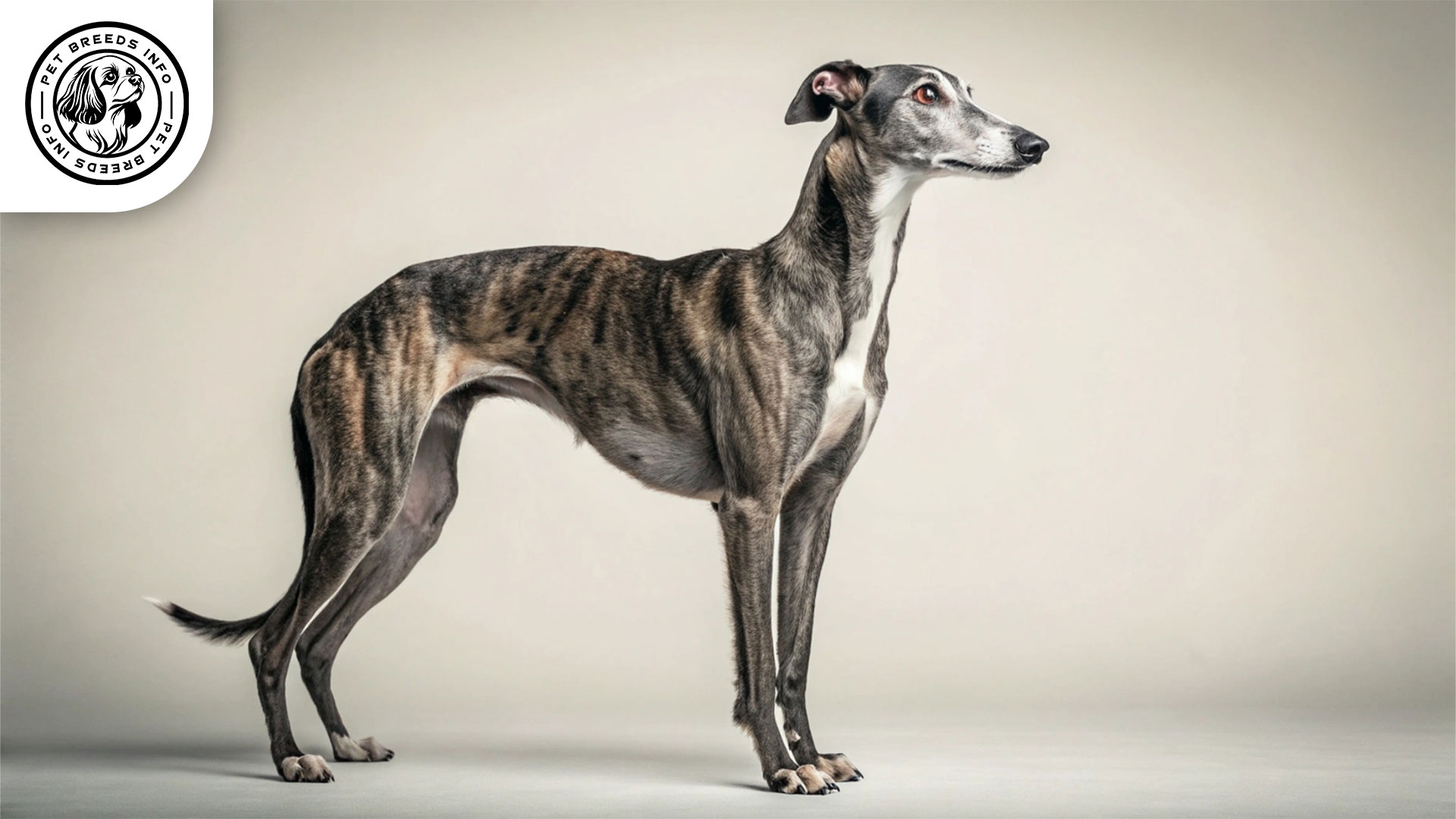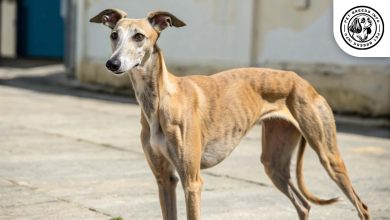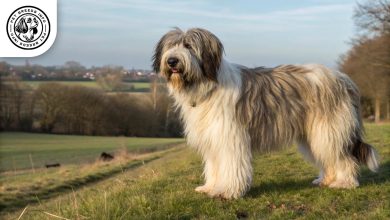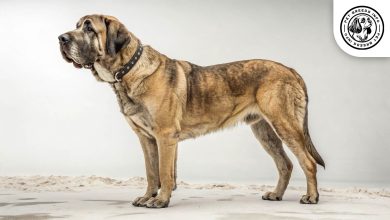Greyhound Dog Breed: Size, Health, Price & Personality
General Introduction of the Breed
The Greyhound, known as “Greyhound” in English and “Levriero” in Italian, is a highly recognizable and ancient breed. It has been historically referred to as the English Greyhound or simply “Greyhound.”
Originating from the Middle East and North Africa, Greyhounds were later refined in the United Kingdom. They were originally bred for hunting game such as deer and hares due to their exceptional speed and keen eyesight. Today, Greyhounds are beloved both for their racing abilities and as affectionate companions.
Table of Contents
| Weight | 50-85 lbs |
| Lifespan | 10-14 years |
| Diet | High-quality kibble, raw, or wet food |
| Care | Minimal grooming, regular nail trimming |
| Health | Prone to bloat, hip dysplasia, osteosarcoma |
| Color | Black, white, fawn, blue, brindle, mix |
| Nature | Gentle, affectionate, calm |
| Price | $200 – $3,000 |
Physical Characteristics
Male Greyhounds typically stand between 26 to 30 inches tall and weigh around 65 to 85 pounds. Females are slightly smaller, ranging from 24 to 28 inches in height and weighing about 50 to 70 pounds.
Their coat is short, sleek, and smooth, requiring minimal grooming. Greyhounds come in a variety of colors, including black, white, fawn, blue, brindle, and combinations of these.
Their eyes are often dark brown, oval-shaped, and expressive. Their ears are small and typically fold back but can become partially erect when alert. They have a long, slender tail that tapers towards the end.
A distinctive trait of Greyhounds is their lean, aerodynamic build, giving them their incredible speed and agility.
Personality and Temperament
Greyhounds are known for their intelligence and ease of training. They learn quickly and respond well to positive reinforcement.
Despite their reputation as racing dogs, Greyhounds are relatively low-energy and enjoy lounging for most of the day. However, they do require daily exercise.
These dogs form strong bonds with their owners and are very affectionate. They thrive on companionship and enjoy spending time with family members.
Greyhounds are generally good with children and other pets, although their strong prey drive means caution should be taken around small animals.
They are sensitive to environmental changes and prefer a calm, structured routine.
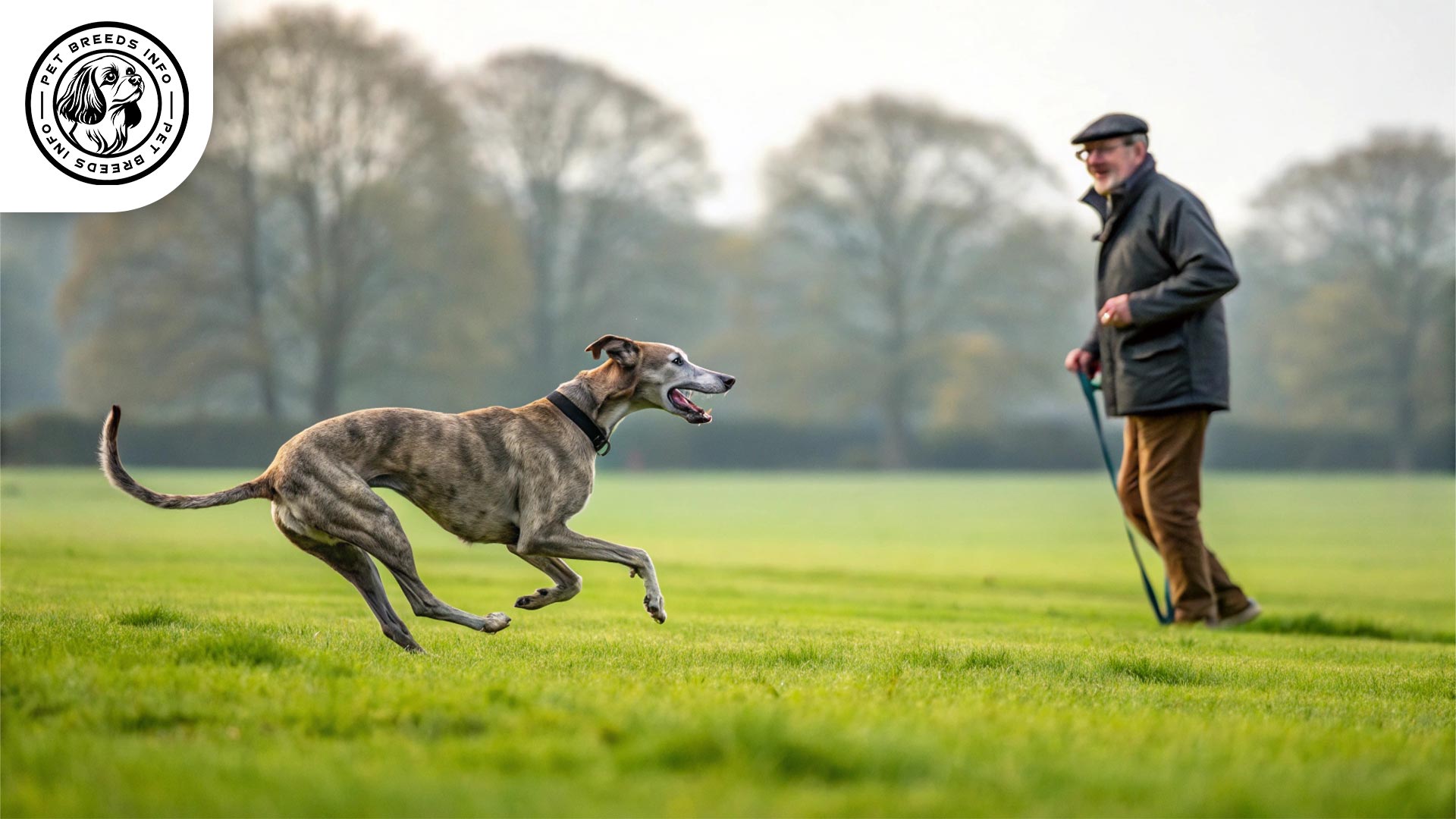
Care and Maintenance Requirements
Greyhounds need daily exercise, such as short sprints in a secure area or a long walk on a leash. They are well-suited to both apartment living and houses with yards, as long as they receive proper exercise.
Their grooming needs are minimal due to their short coat. Weekly brushing is sufficient to remove loose hairs. They shed lightly throughout the year.
Greyhounds are sensitive to extreme temperatures, especially cold weather, due to their low body fat. A coat or sweater is recommended in cooler climates.
Regular hygiene practices such as nail trimming, ear cleaning, and dental care are essential to keep them healthy.
Diet and Nutrition
A high-quality diet is essential for Greyhounds, with options including premium dry kibble, wet food, or a raw diet, depending on individual needs.
Read More: Giant Schnauzer Dog
They are prone to bloat, so feeding smaller meals multiple times a day is recommended. Avoid feeding them immediately after vigorous exercise.
Toxic foods such as chocolate, grapes, onions, and excessive fatty foods should be strictly avoided.
Portion sizes should match their weight, activity level, and metabolism. Consulting a veterinarian for personalized diet recommendations is ideal.
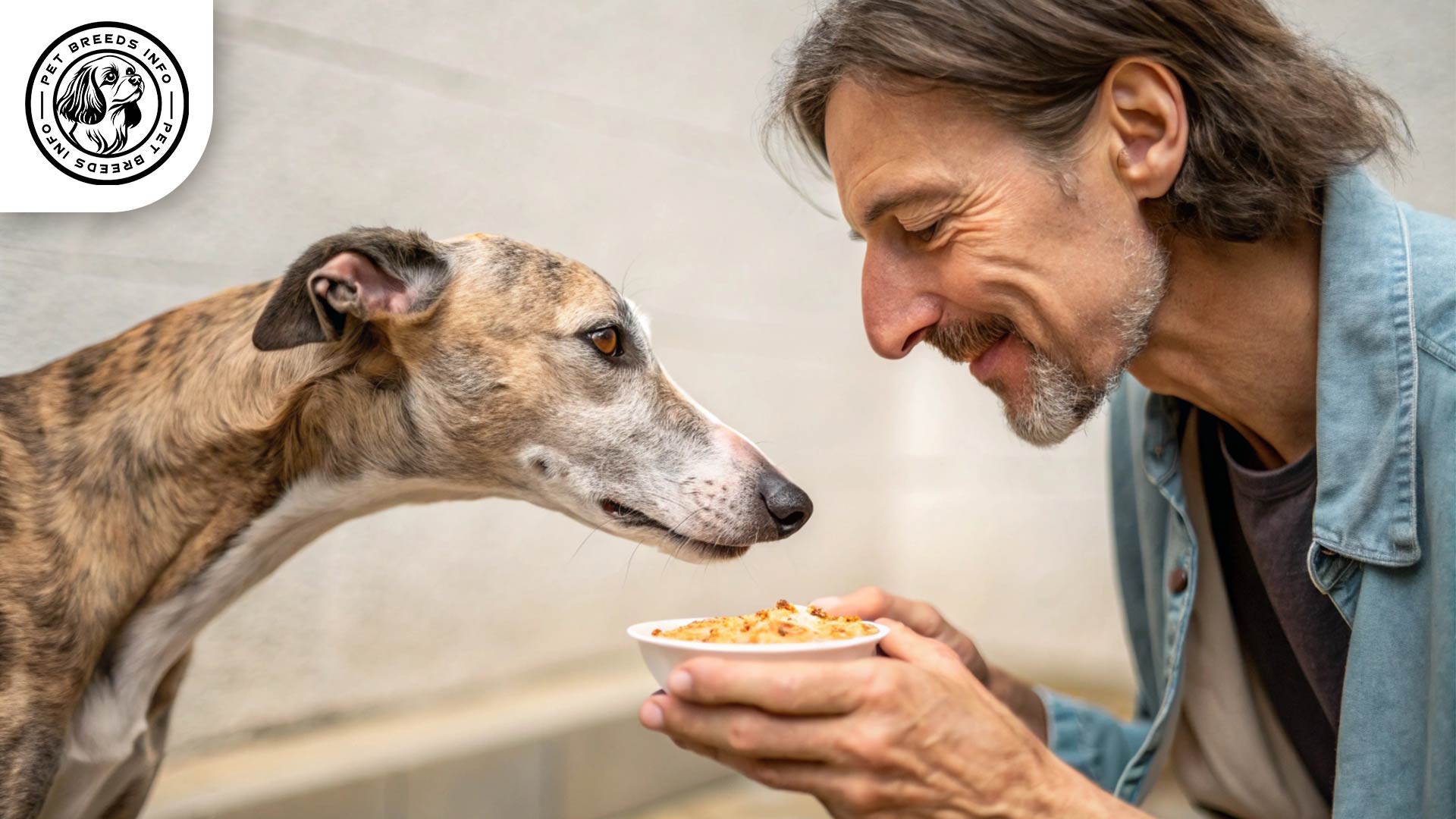
Health and Common Medical Issues
Greyhounds are generally a healthy breed but may be prone to certain genetic conditions such as hip dysplasia, osteosarcoma, and bloat.
They have thin skin, making them more susceptible to cuts and abrasions.
They typically live between 10 to 14 years, with proper care and a balanced diet.
Routine veterinary check-ups, vaccinations, and preventive treatments for parasites are necessary to maintain their well-being.
Training and Behavior Management
Greyhounds are relatively easy to train due to their intelligence and desire to please. However, they can be independent thinkers.
Training should begin early and focus on positive reinforcement techniques.
Read More: Golden Retriever Dog
Socialization from a young age is important to help them adapt to new environments and situations.
They respond well to a gentle and consistent training approach, as they can be sensitive to harsh discipline.
Interaction with Other Animals and Humans
Greyhounds are generally good with children and make gentle, affectionate family pets. However, supervision is necessary with very young children.
They can coexist with other dogs but may have a strong hunting instinct toward smaller animals, such as cats and rabbits.
They thrive in homes with loving owners who can provide companionship, making them suitable for families and individuals alike.
Greyhounds are affectionate but independent, meaning they enjoy attention while also appreciating quiet time alone.
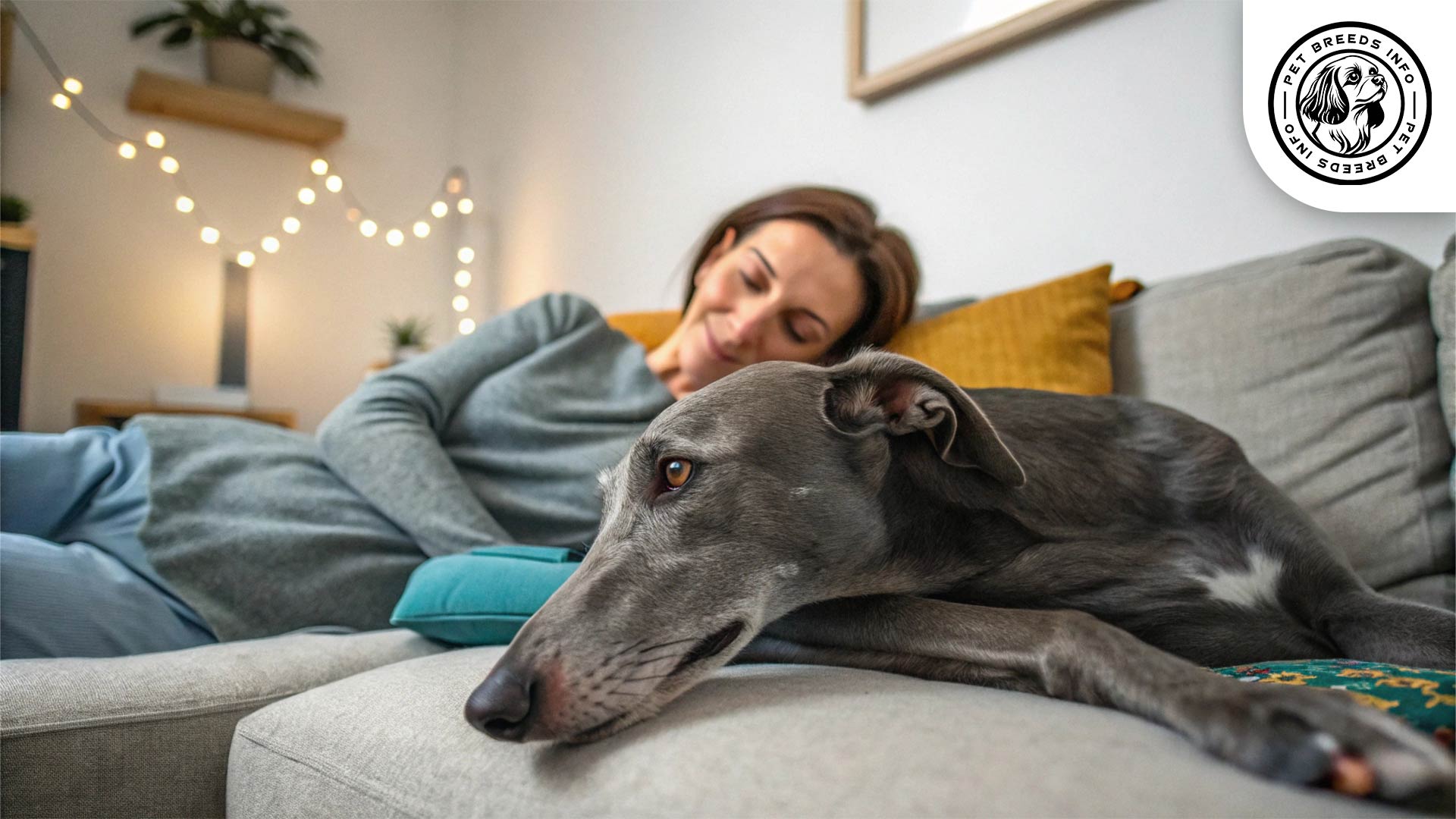
Price and Availability
The cost of purchasing a Greyhound from a reputable breeder can range from $1,000 to $3,000, depending on pedigree, breeder reputation, and location.
Many retired racing Greyhounds are available for adoption through rescues at lower costs, often ranging from $200 to $500.
Adopting from shelters or breed-specific rescue groups is a great way to provide a retired racing Greyhound a loving home.
Conclusion and Final Thoughts
Greyhounds are an excellent choice for those looking for an affectionate, low-maintenance companion. They fit well into most households, whether in apartments or houses with yards.
Read More: Great Dane Dog
Potential owners should consider their exercise needs, sensitivity to temperature, and their strong prey drive before bringing one home.
With proper care, training, and love, Greyhounds make exceptional pets and lifelong companions.
FAQ
Are Greyhounds good family pets?
Yes, they are affectionate, gentle, and great with families.
What health problems do Greyhounds have?
They can suffer from bloat, hip dysplasia, and thin skin, making them prone to cuts.
Can Greyhounds live in apartments?
Yes, they are adaptable and require minimal space as long as they get regular walks.
Do Greyhounds need a lot of exercise?
Despite their speed, they are low-energy and enjoy lounging, but they do need short daily walks.
